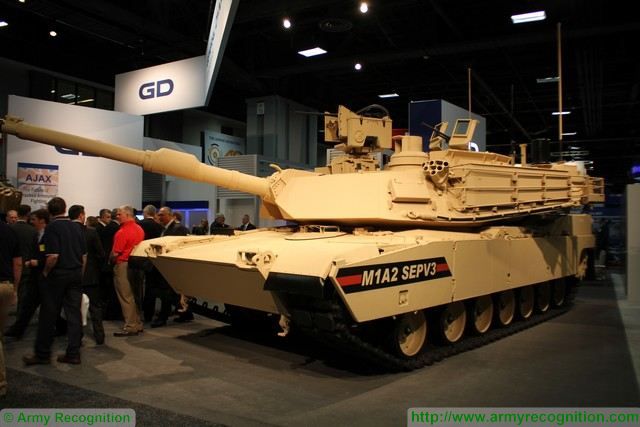Breaking news
General Dynamics awarded a contract for US Army to upgrade M1A2 SEP V2 to M1A2 SEP V3 116121510.
| 2015
|
|
|||
|
Defence & Security Industry News - General Dynamics
|
|||
|
|
|||
| General Dynamics awarded a contract for US Army to upgrade M1A2 SEP V2 to M1A2 SEP V3. | |||
|
The U.S. Army TACOM Lifecycle Management Command has awarded General Dynamics Land Systems a $92.2 million contract to upgrade M1A2 System Enhancement Package (SEP) v2 Abrams tanks to the M1A2 SEP Version 3 (v3) configuration.
|
|||
|
|
|||
 General Dynamics M1A2 SP V3 at AUSA 2015 defense exhibition in Washington D.C. General Dynamics M1A2 SP V3 at AUSA 2015 defense exhibition in Washington D.C. |
|||
|
|
|||
|
General Dynamics is working closely with the Army to improve the survivability, maintainability, fuel efficiency, power generation and network capability of its fleet of Abrams Main Battle Tanks.
“Projected for full rate production within the next two years, the Abrams M1A2 SEPv3 will provide the Army with the tank they need to dominate the battlefields of the future,” said Donald Kotchman, vice president of Tracked Combat Vehicles for General Dynamics Land Systems. The M1A2 SEPv3 production process will begin with a pilot program of six tanks before moving into full-rate production. Work will be performed by existing employees in Anniston, Ala.; Tallahassee, Fla.; Lima, Ohio; and Scranton, Pa.The M1A2 Abrams SEP V3 (System Enhanced Package) is a modernized version of the M1A2 SEPV V2 main battle tank which has a number of upgrades in the areas of survivability, maintainability, full efficiency and network capability. In October 2015, the M1A2 SP V3 was presented for the first time at AUSA, defense exhibition in Washington D.C. The M1A2 SEP V3 is equipped with a new improved entire IED capability electronic warfare build on the vehicle. This tank will be fitted with (IFLIR) Improved Forward-Looking Infrared to identify target. The IFLIR uses long- and mid-wave infrared technology in both the gunner’s primary sight and the commander’s independent thermal viewer. |
|||
|
|
|||
|
|
|||




























